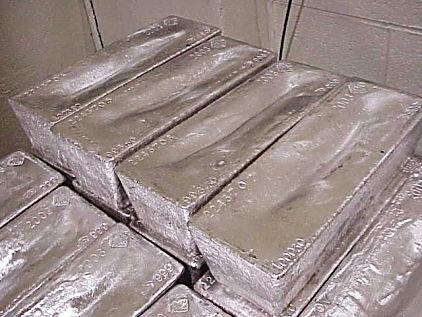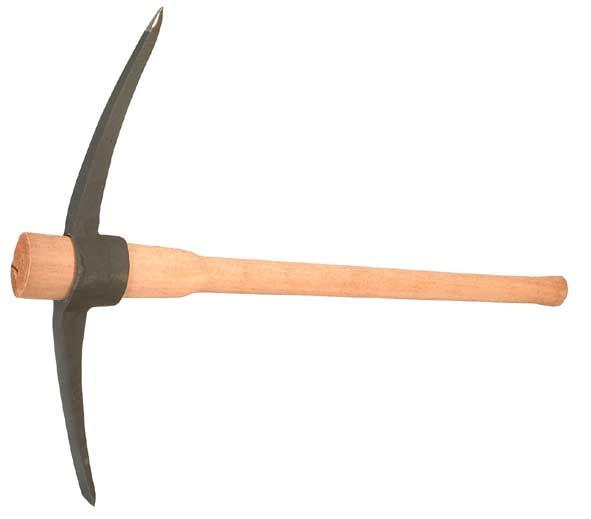The COMEX (a.k.a. Commodities Exchange) is a part of the NYSE. It is set up to facilitate futures trading of commodities like silver. Each COMEX silver contract is 5,000 ounces. Just like any futures contract you can go long and bet that the price will go up, or you can go short and bet that the price will drop. If you are right then you make a profit.
This is where the COMEX gets interesting. There are commercial banks who buy thousands of silver contracts. For a long time now there have been three commercial banks shorting the price of silver.
These banks hold most of the outstanding silver contracts on the COMEX. So, when these banks short the COMEX it pushes the price of silver down, and they own so many contracts that they are able to easily push the price down when it is beneficial to them.
These banks are making billions of dollars by shorting the COMEX, and every bit of their activity is illegal. The CFTC (Commodities Futures Trading Commission.) just refuses to stop them from manipulating the price of silver down. Why would they want to push the silver price down? Well, because they want the dollar to appear strong. These banks are in the process of being stopped for their illegal behavior due to the efforts of many people exposing these commercial banks illegal acts.
(Actual 1,000 oz COMEX bars)
Once the
manipulation of the silver
market is
stopped, and it will be sooner than later, the price will go
bananas! Even if the
manipulators aren’t forced to stop short
selling, the

physical demand will eventually overwhelm them and they will be forced to cover their short positions.
Shortages
Major shortages exist in silver right now. Most of the above ground silver has been depleted over the past 25 years due to the massive industrial demand. In fact, Silver is more rare than gold above ground, by a large margin.
Industrial Demand
Each year industry consumes 50 million more ounces of silver than is mined.
Industrial demand will be ever increasing as more and more uses for silver become available. Silver is used in almost every electronic device you have in your home. It is the best conductor of electricity that is available. Imagine every Chinese citizen having a refridgerator or tv in their home. You can see where this is going?

Everything
from
electronics & solar panels to water filters & antibiotic
creams
consume silver. In fact, over 50% of the silver demand is used for industrial applications.

Silver is used in things such as solar panels and cell phones because it has an electric conductive efficiency of 100%. It would be used in power distribution like power lines if it was affordable to do so.
Silver also has antibacterial uses. Silver has been used for thousands of years as far back as the Egyptians to purify drinking water and keep liquids and food from spoilage. Ancient silver vessels have been recovered that were used to store liquids in.

Pioneers who were heading out west in to the frontier used to place silver dollars in their milk jugs to kill off any bacteria that might grow. Today, silver is used in water filters, medical equipment, military equipment, and medicine to kill bacteria.
Silver actually disables bacteria from forming by breaking the cell wall of any bacteria. So, the popularity of silver in hospitals is growing
rapidly.
Curad has a line of band aids that
has silver in the healing pad to kill
any bacteria.
Most of the industrial applications
that are used are consuming silver.
What this means is that the silver is
NOT recoverable. It is simply
thrown in a landfill never to be
seen again. Silver will one day

become recoverable, just like gold
when it is used in electronics, but first silver must go to a price where it is economical to recover it.
Some may make the mistake of saying that a metal like silver couldn’t or wouldn’t
go to a price of $1,000
or higher, but look at
the price of rhodium.
Both
palladium and
rhodium are
www.goldsilver123.com

35 interesting metals in themselves.
At one point palladium was $60/ounce until a shortage from Russian producers drove the price to $1,000/ounce. The Ford Motor Company purchased huge amounts of palladium at its high fearing a shortage would disrupt their production of catalytic converters.
Rhodium has a seemingly more dramatic story. Rhodium was once priced at around $300/ounce and the price briefly rose to $10,000/ounce in 2008. These sharp price rises in these metals is simple proof that it has happened before, and will happen again.
Mining
The mining of silver is becoming more and more difficult.
Companies are having to dig deeper mines and a lot of the mines that were once producing have been completely mined out.
This is making it harder for companies to keep up with demand and even harder to find new locations to mine. Most junior mining companies trade for around $.10-$3.00/share. These are referred to as penny stocks because they trade so cheap. Do not invest in penny mining stocks until you check out this information on penny stock investing. Day trading penny stocks can be very profitable, and there are some good resources which will help you make GREAT incomes trading penny stocks. Check out this site to make money trading penny stocks.

Physical gold and silver are great and I would highly recommend them to anyone wanting to diversify out of dollars, but even more significant gains are going to come in the penny mining stocks. Why, you might be asking? It’s because gold and silver stocks provide much greater leverage due to the operating leverage of the company than does buying physical coins or bullion.
From 1972-1980 was the last great bull market in precious metals. The peak of the silver price eventually hit $50/ounce in 1980. If you adjust that price for inflation today, that would be the equivalent of about $130 to $150 per ounce.
It wasn't just the metals that did very well from 1972-1980, but the mining stocks did tremendously well.
For an example of where the mining stock prices could go we will look at the last gold and silver bull market from 1972-1980. In 1975, many gold and silver stocks were trading under $2/share and most were actually trading under $.50/share. “Lion Mines” was trading at $.07/share in 1975 and by 1980 it was at $380/share. YES! That is not a misprint.
So, if you had invested $500 in 1975 you would have gotten a return of roughly $2,700,000 in 1980! This is just one of the many success stories. In January of 1980, most gold and silver mining shares were trading above $50 and lots were at $100-$200.
Penny stocks are not traded on the big stock exchanges. Instead, they are traded on the OTC bulletin board market and the pink sheets. Don’t let this confuse you. That just means that since the stock prices of these companies trade at such low levels (i.e. $.10/share), they can’t be traded on the large stock markets.
Since the price of silver has been floating in the $12-$15 range for so long, many miners are shutting their operations because it simply is not profitable. Also, most mines do not produce just silver. Mines also produce base metals like nickel, copper, zinc, and iron.
However, money is starting to flow into the miners now that silver has started to take off. When the economy started slowing back in 2008, so did the demand for these base metals. That resulted in less silver coming out of the ground as well. This is very bullish for silver!
The bullish fundamentals for silver are too much for any concerned investor to ignore.
All it takes is 1/10 of 1% of the U.S. population to buy silver to send the price to the stratosphere. The silver market is so tiny that the smallest increase in demand could send it into price territories never dreamed of before.
It would take just one billionaire to buy into silver to send the price to the moon.
Although the bullish fundamentals may scream loudly at some people to buy now, others will not. Others will wait on the sidelines until the masses drive the price up, and then they will buy. This totally defies logic, but it happens.
That's the way bull markets work. You have the people who saw the fundamentals a long time ago and got positioned, you have those who are getting in today, and you have the masses who will get in close to the top, which is when I will be selling.
The list of uses for silver are immense, and the demand is outgrowing the supply by a huge margin. A lack of new silver mines and a solid investor demand will prove too much for the silver price to stay low.









 35 interesting metals in themselves.
35 interesting metals in themselves. 